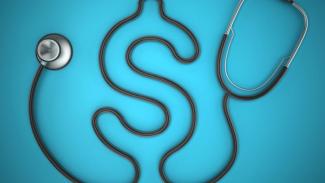
A Guide to Managing Medical School Debt
A Guide to Managing Medical School Debt
The healthcare sector offers high compensation for most jobs, making it a high-reward career path for those who want to enter it. In 2023, the median annual income for medical professionals is expected to be $238,978. Healthcare workers, no matter how rich or poor, are vital to the health of our society.
Nonetheless, professions in healthcare demand a high level of knowledge. Upon completing your bachelor's degree, you'll need to pay for medical school. The Association of American Medical Colleges also known reports that in 2022, the typical four-year tuition cost for medical school was more than $360,000.
Depending on your repayment arrangement, medical school debt might last from 10 to 30 years. If you want to discover how to pay off medical school debt faster, follow these strategies;
1. Make payments during residency
Medical school debts accumulate interest while in school and are typically repaid six months after graduation. You can defer student loan payments throughout your residency or fellowship, but this will cost you. Interest accumulates throughout periods of deferment and forbearance, increasing your total balance.
To save money on interest, make at least partial payments during your residency and use delay and forbearance as a last choice.
2. Consider Refinancing
With high-interest loans, student loan refinancing can help you lower your rate, lower your payments, and save money. Refinancing is engaging with a private lender to combine your debt into a single loan. If you have a good credit score or a cosigner, you may be eligible for a loan with a lower interest rate and a longer term to lower your monthly payment.
However, refinancing federal loans transfers them to a private lender, rendering you ineligible for federal programs like IDR plans, PSLF, and future debt forgiveness programs.
3. Review Income-Driven Repayment Plans
To become a doctor, you must first earn a bachelor's degree before attend to medical school, which can take up to four years. Depending on your expertise, you may need to complete three to nine years of internships and residency programs.
It may take some time before you can afford to make monthly student loan payments under a standard repayment plan. However, many new medical school graduates choose other payment options, such as income-driven repayment (IDR) programs for federal student loans.
An IDR plan calculates payments based on your discretionary income. Most payment terms last between 20 and 25 years. At the start of your career, IDR intends to provide more affordable payments.
4. Seek loan forgiveness
Several medical school loan forgiveness schemes, including Public Service Loan Forgiveness, are offered to doctors who agree to work in the public sector in underserved areas for a set time. Loan forgiveness may be an option if your professional ambitions match one of these programs' requirements. Considering whether you have federal or private student loans, you can combine debt forgiveness for doctors with another repayment plan to increase the amount forgiven.
5. Make Extra Payments
Making additional payments, regardless of size, might gradually reduce the interest on your loan. Unexpected income, such as a tax refund or a gift, might help you pay off debt and save money.
Trimming your budget and removing non-essential items might save money for loan payments. If you paid an extra $50 monthly toward your debts, you'd save money on interest and be debt-free three months earlier.
6. Take Advantage of Tax Deductions
The student loan interest tax deduction will let you to decrease your taxable income by $2,500, or the loan interest amount. Reducing your taxable income can qualify you for a higher tax refund, which you can use to make additional loan installments.
You will most likely be eligible for it during your residency or the first few years of full-time employment.
How long does it take to pay your medical school debt?
The time it takes to pay off debt depends on your repayment method. As in the case of pursuing Public Service Loan Forgiveness will result in ten years of payback, whereas income-driven schemes can run up to 25 years.
Paying off student debts a little earlier than you had planned carries no penalties, and many physicians would rather aggressively repay their medical school debt.
